Scarecrow Film Score Guides
Series Editor: Kate Daubney
1. Gabriel Yareds The English Patient: A Film Score Guide, by Heather Laing. 2004.
2. Danny Elfmans Batman: A Film Score Guide, by Janet K. Halfyard. 2004.
3. Ennio Morricones The Good, the Bad and the Ugly: A Film Score Guide, by Charles Leinberger. 2004.
4. Louis and Bebe Barrons Forbidden Planet: A Film Score Guide, by James Wierzbicki. 2005.
5. Bernard Herrmanns The Ghost and Mrs. Muir: A Film Score Guide, by David Cooper. 2005.
6. Erich Wolfgang Korngolds The Adventures of Robin Hood: A Film Score Guide, by Ben Winters. 2007.
7. Mychael Dannas The Ice Storm: A Film Score Guide, by Miguel Mera. 2007.
8. Alex Norths A Streetcar Named Desire: A Film Score Guide, by Annette Davison. 2009.
9. Nino Rotas The Godfather Trilogy: A Film Score Guide, by Franco Sciannameo. 2010.
Nino Rotas
The Godfather Trilogy
A Film Score Guide
Franco Sciannameo
Scarecrow Film Score Guides, No. 9

SCARECROW PRESS, INC.
Published in the United States of America
by Scarecrow Press, Inc.
A wholly owned subsidiary of
The Rowman & Littlefield Publishing Group, Inc.
4501 Forbes Boulevard, Suite 200, Lanham, Maryland 20706
www.scarecrowpress.com
Estover Road
Plymouth PL6 7PY
United Kingdom
Copyright 2010 by Franco Sciannameo
All rights reserved. No part of this publication may be reproduced,
stored in a retrieval system, or transmitted in any form or by any
means, electronic, mechanical, photocopying, recording, or otherwise,
without the prior permission of the publisher.
British Library Cataloguing in Publication Information Available
Library of Congress Cataloging-in-Publication Data
Sciannameo, Franco.
Nino Rotas the Godfather trilogy : a film score guide / Franco Sciannameo.
p. cm. (Scarecrow film score guides ; v. no. 9)
Includes bibliographical references and index.
ISBN 978-0-8108-7711-5 (pbk. : alk. paper)
1. Rota, Nino, 19111979. Motion picture music. 2. Motion picture musicHistory and criticism. 3. Godfather (Motion picture) 4. Godfather, part II (Motion picture) 5. Godfather, part III (Motion picture) I. Title. II. Title: Godfather trilogy.
ML410.R82S355 2010
781.542-dc22
2010018177
 The paper used in this publication meets the minimum requirements of American National Standard for Information SciencesPermanence of Paper for Printed Library Materials, ANSI/NISO Z39.48-1992.
The paper used in this publication meets the minimum requirements of American National Standard for Information SciencesPermanence of Paper for Printed Library Materials, ANSI/NISO Z39.48-1992.
Manufactured in the United States of America.
In loving memory of my sister
Luciana Sciannameo
Contents
Kate Daubney
Musical Examples
Editors Foreword
Since I established the concept of the film score guides in 1999 and wrote the first volume on Max Steiners Now, Voyager score (in the series initial incarnation with Greenwood Press), film musicology has continued to undergo rapid expansion and change. While ten years ago, the notion of score-focussed scholarship seemed an obvious way to consolidate just one area in a rapidly diverging field, such is the diversity of film music composition practice now that the focus on the score as a textual origin is at times anachronistic and outdated, as perhaps is the implication that techniques of film scoring are distinct from techniques used for composing soundscapes for other multi-media forms, such as computer games and other web-based creativity. The prevalence of the temp track, the influence of computer and electronic composition techniques, and the trend towards directors cuts in DVD release will all need to be reflected in the way this series evolves and the high level of analysis and reading its authors bring to bear on the music they reveal to us. These are the challenges for any academic discipline, to chart and understand the dynamic leading edge of a field while ensuring that its foundations have been soundly explored. Film musicology has, in most respects, managed to achieve this balance very well through the appearance of new journals, a significant increase in conference activity, and a broader recognition by mainstream musicology and film studies of areas of mutual interest.
The contribution of the Scarecrow series of Film Score Guides is to draw together the variety of analytical practices and ideological approaches in film musicology for the purpose of studying individual scores. Much value has been drawn from case studies of film scoring practice in other film music texts, but these guides offer a substantial, wide-ranging, and comprehensive study of a single score. Subjects are chosen for the series on the basis that they have become and are widely recognized as a benchmark for the way in which film music is composed and experienced, or because they represent a significant stage in the compositional development of an individual film composer. A guide explores the context of a scores composition through its place in the career of the composer and its relationship to the techniques of the composer. The context of the score in narrative and production terms is also considered, and readings of the film as a whole are discussed in order to situate in their filmic context the musical analyses which conclude the guide. Furthermore, although these guides focus on the score as written text, bringing forward often previously unknown details about the process of composition as they are manifested in the manuscript, analysis also includes exploration of the music as an aural text, for this is the first and, for most audiences, the only way in which they will experience the music of the film. The scores of The Godfather Trilogy are paramount examples of this latter principle, offering as they do the aural equivalent of iconic visual moments for which the first film in particular is so renowned.
This volume on The Godfather Trilogy shows another significant development in film musicology, the drawing together in analysis of more than one film in a non-linear, cross-textual approach. The opportunity to analyze trilogies is both enthralling and overwhelming to the film musicologist, for while there is generally unprecedented scope for seeing how a composer works and reworks limited material over a far larger scale than a single film permits, it can be a logistical and conceptual problem to impose scholarly uniformity over material that might have been composed over many years. Where no uniformity exists, where personalities and circumstances, even additional composers, have disrupted the homogeneity, what can we learn about how context imposes itself on the score?
These are just a few of the challenges facing Dr. Sciannameo in his analysis of the music for these most famous of films, for the other great burden is to impose any kind of reading at all on a soundtrack which is so distinctive in the film music repertoire, not to mention the global soundscape. The substantial proportion of previously composed music which emerges during the films, in addition to the culturally distinctive original material, brings multiple frames of reference to both audience and scholar, while the films other narrative components draw on complex models which are both finite in their specificity and universal in their appeal. Professor Sciannameo has endeavored to unpack these distinct functions of Italianness and Italianicity in such a way that they can inform our reading of the music too, thus indicating how the soundtrack can be both separated and inextricably repackaged within the film for our understanding. Nonetheless, however intricate and multiple the possible readings are, the soundtrack speaks so directly to the films content that readers of this volume, whatever their level of musical knowledge, should find much that will illuminate their enjoyment of this extraordinary trilogy.
Next page

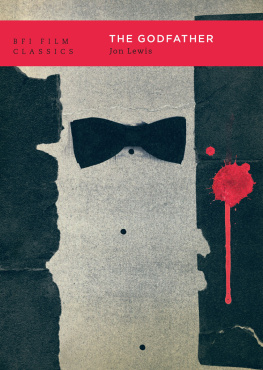

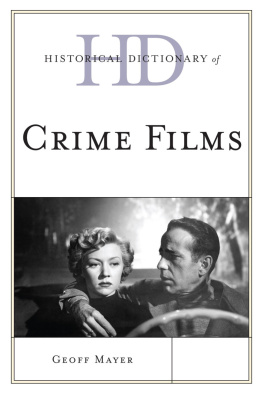
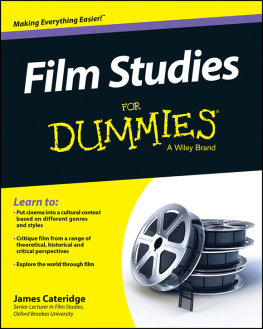
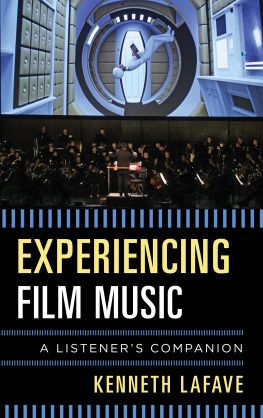
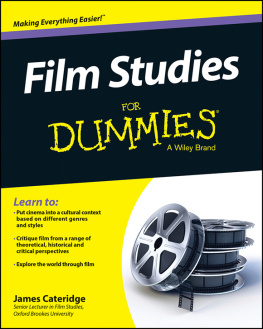

 The paper used in this publication meets the minimum requirements of American National Standard for Information SciencesPermanence of Paper for Printed Library Materials, ANSI/NISO Z39.48-1992.
The paper used in this publication meets the minimum requirements of American National Standard for Information SciencesPermanence of Paper for Printed Library Materials, ANSI/NISO Z39.48-1992.